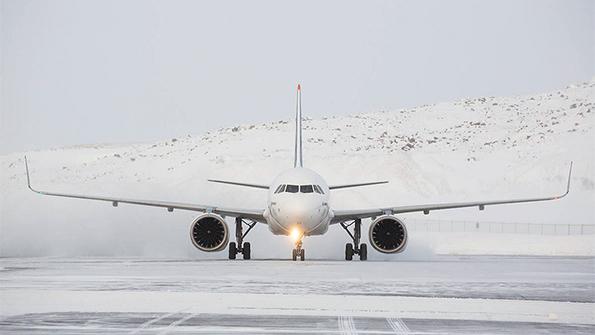
The Global Action Plan for the Prevention of Runway Excursions (Gappre), released recently by a broad group of players in commercial aviation, is a set of safety recommendations aimed at curbing the number of aircraft that veer off or overrun a runway at takeoff or landing. Measured as the most frequent end-state in the International Air Transport Association’s (IATA) accident statistics for 2005-19, solutions for the problem have resisted previous efforts.
With the prospect of a swift traffic recovery this year, it is a good time to turn the spotlight on the runway excursion risk. Pilots, controllers and other actors are logging fewer, or less intensive, working hours than usual, and there is concern that a lack of recent experience will become a safety issue.
- Close to one-fourth of accidents involve a runway excursion
- Group of organizations releases an exhaustive set of recommendations
The Gappre is the outcome of two years of cooperative studies started well before the COVID-19 crisis. The plan nevertheless might provide the right way to breathe a new motivation for safety into the industry.
“We will be flying again big time this summer and, when we do, we have to be careful,” says Eamonn Brennan, director general of Eurocontrol, the organization in charge of air traffic management in Europe and Turkey.
However, an estimated 50% of pilots have not flown in the last two months. “Over the next six months, a problem will be crews returning to service, and this will be the same for air traffic controllers,” he says. IATA is on the same page. “There is a combination of pilots who are not flying enough and controllers who are not controlling enough,” says Gilberto Lopez Meyer, senior vice president for flight safety operations.
Moreover, both Brennan and Lopez Meyer are concerned about a lack of hands-on training for pilots, especially since manual flying skills are needed to prevent runway excursions.
They generally start with a stressed approach and other human factors, Brennan says. But the issues giving rise to an excursion can be traced back to the en route phase, he adds.
According to IATA’s global accident database, 23% (283) of accidents involved excursions, a percentage that has plateaued since 2015. “This is not the main killer, but these numbers are unacceptable,” Lopez Meyer says.
“The runway excursion issue has been so elusive for over a decade,” adds Hassan Shahidi, president and CEO of the Flight Safety Foundation. In fact, there have been attempts to address it for even longer. In 1998, the Flight Safety Foundation was recommending pilots go around more often in case of unstabilized approaches, a typical factor in an excursion.
The industry has, at least, effectively reduced the rate of excursion accidents per-million-flights, the report shows.
The working group gathered input from 100 aviation professionals in more than 40 organizations. The Gappre endeavor was led by Eurocontrol and the Flight Safety Foundation. Subgroups were led by representatives of IATA, the Civil Air Navigation Services Organization (CANSO), the UK Civil Aviation Authority, Gulfstream, Paris Charles de Gaulle Airport and the Dutch research center NLR. The report was reviewed and validated by the European Union Aviation Safety Agency, IATA, CANSO and Airports Council International.
Managing the excursion risk is a prime example of why disparate aviation segments cannot address industry-wide issues on their own. The factors for success are tightly coupled and demand a joint and coordinated effort. “The complexity of the runway excursion prevention comes also from the fact that the effect of the risk and resilience factors is highly cumulative: runway condition maintenance and reporting, aircraft performance and operations, collaborative approach-path management and adherence to robust policies for safe descent and approach planning, stabilized approach, safe landing and go-around are some examples,” the report says.
The working group’s recommendations are mainly generic, so implementation may be adapted to local conditions and specific context.
In the proposals, Gappre notes crews sometimes mistake runway edge lights for centerline lights during lineup, just before takeoff. To address that, Gappre requests that the International Civil Aviation Organization and regulators adopt regulatory measures to help avoid such confusion. The report also suggests more runways should have centerline lights and, if installed, they should always be used together with edge lights.
While go-arounds are encouraged, Brennan is realistic about their use. “In Europe, the trend to maximize the use of runways puts pressure on controllers. . . . If everyone performs a go-around, the airport cannot function. We cannot pretend that pressure is not there.”
Meanwhile, OEMs are introducing technologies to help avoid excursions. Airbus subsidiary Navblue last year launched RunwaySense, a service that enables airlines and airports to use an Airbus aircraft as a sensor for runway conditions. Under RunwaySense, a system measures the braking action along the runway and the data then are shared almost real-time, via a web-based tool or application programming interface.






Comments